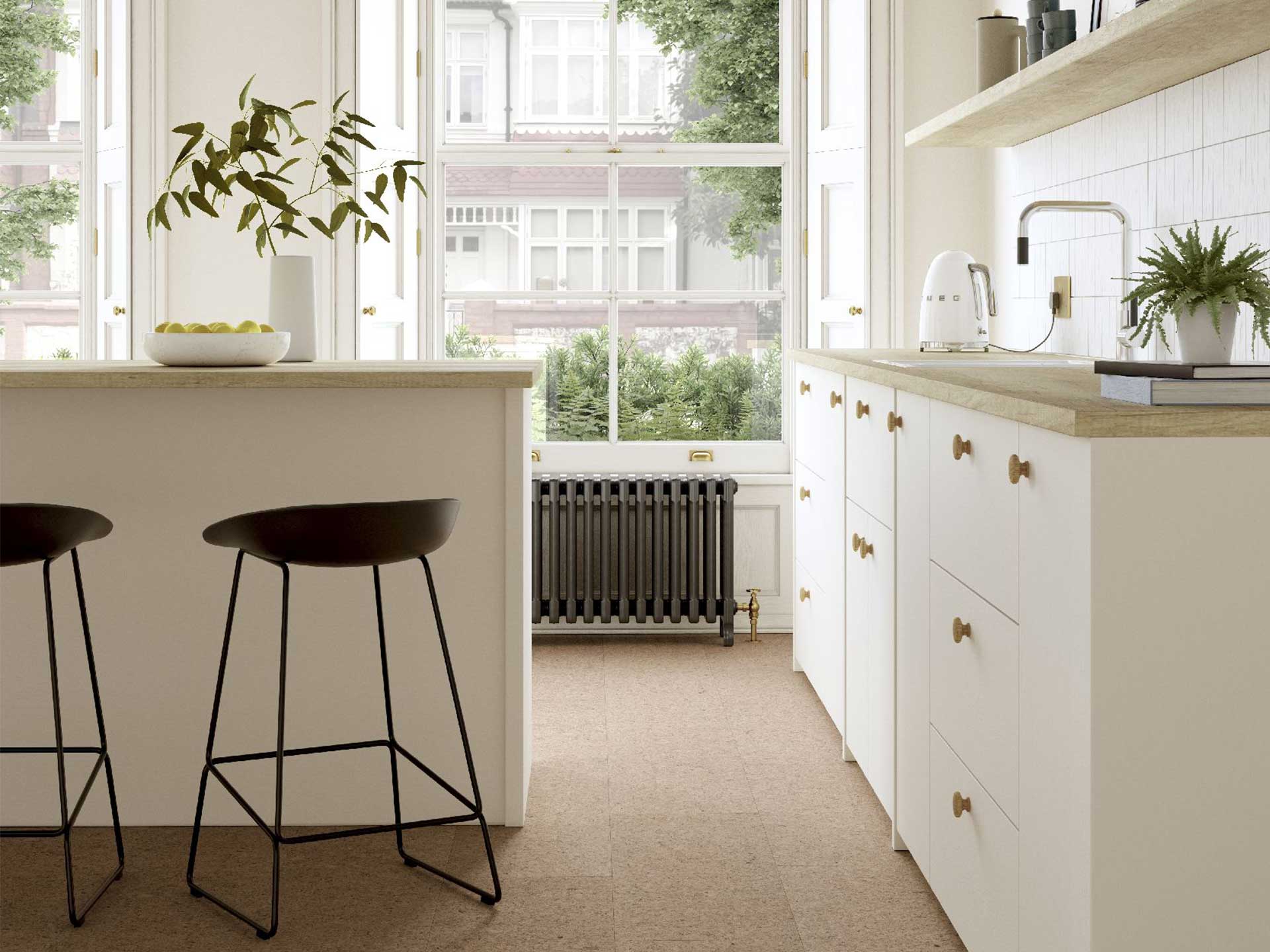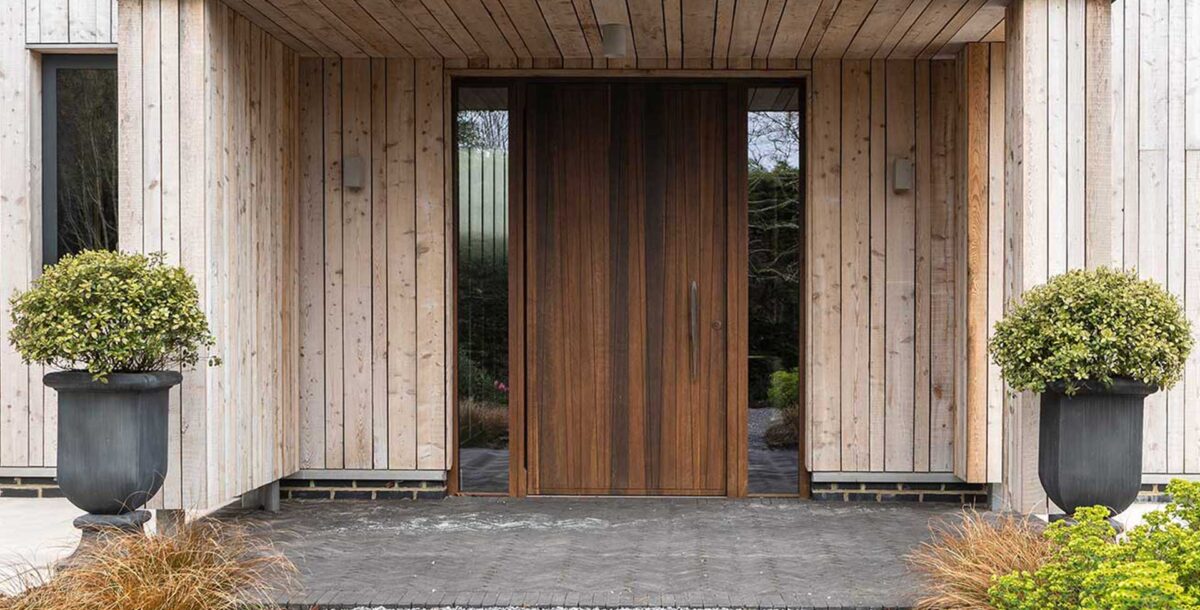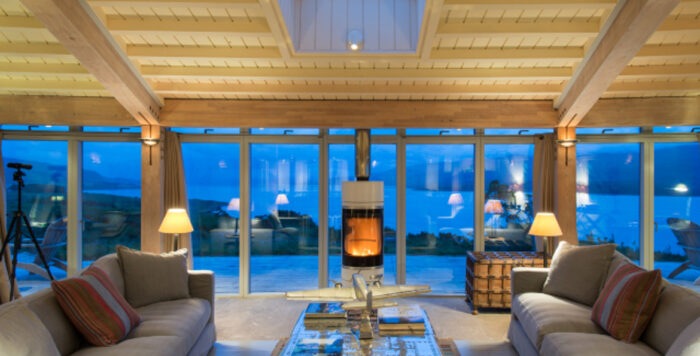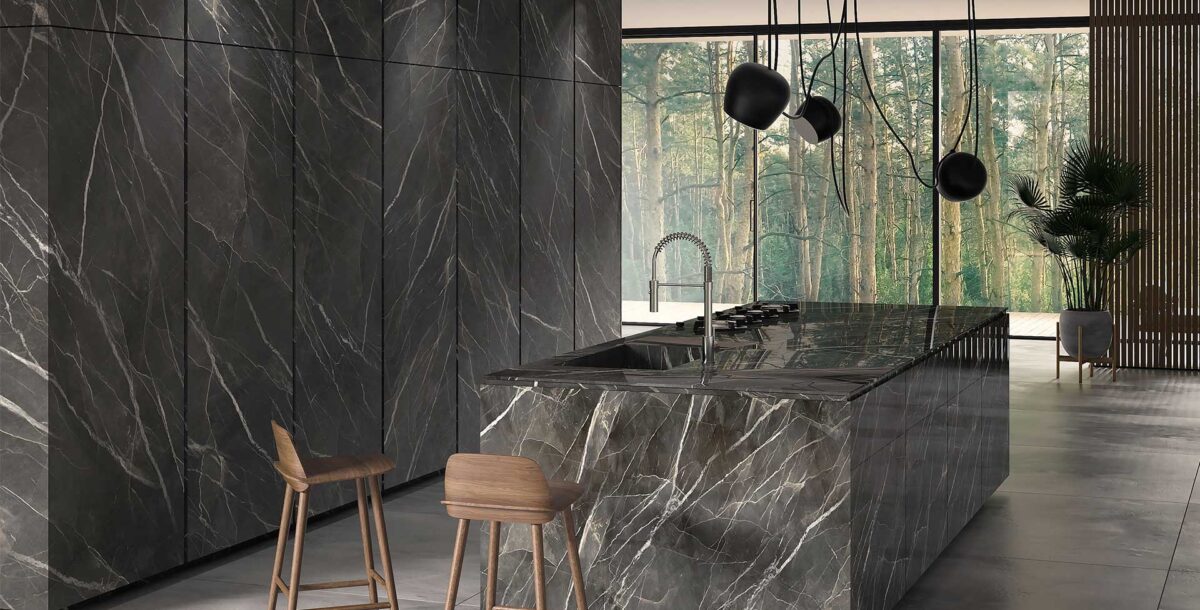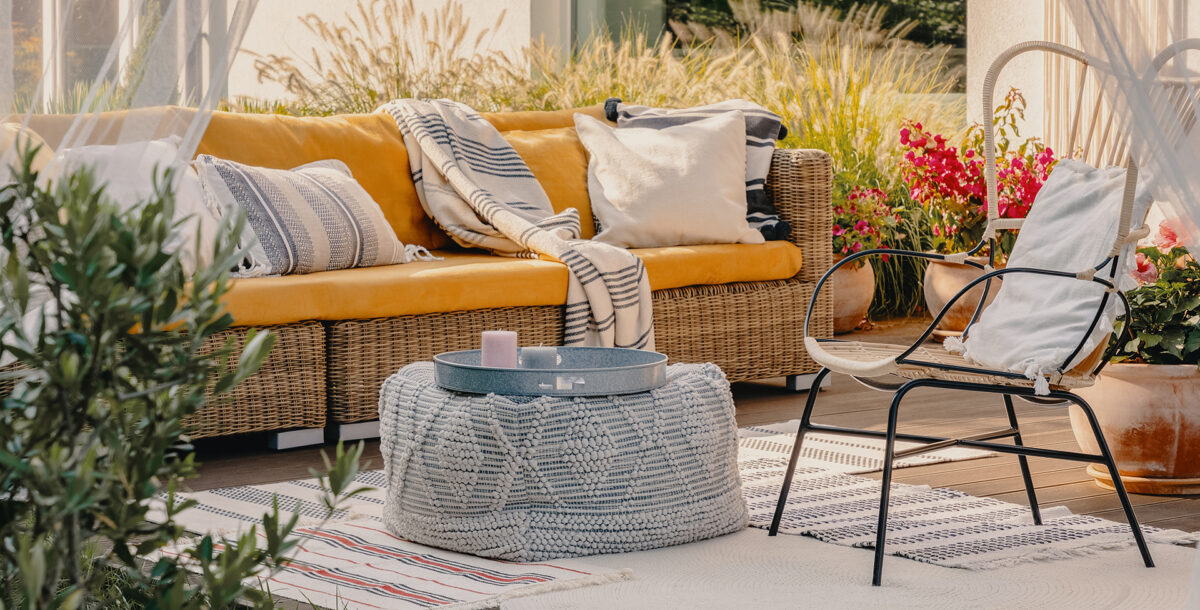How to make your home quieter
From material choices and layout in the build stage to retrofit, here's a look into the different ways you can reduce the noise in your house.
In a frenetic, modern world, where adverts blare, appliances bleep and our phones are relentlessly flashing, making our houses as quiet as possible is becoming an increasingly attractive prospect. We’re all craving a sanctuary to retreat to. There’s been a lot of buzz about quiet homes in recent years, especially on the trend of “house hushing”, which sounds like making your house quieter, but is angled more towards decluttering and organising your home to feel more peaceful. However minimalism doesn’t equal a quiet house, and literally hushing your house starts at the planning stage, thinking about the acoustics of a house and taking some of the principles, and benefits, of Passivhaus. Here’s a look into all the ways you can reduce the noise in your home, whether that’s through material choices and layout in the build stage to retrofit.
Why are Passivhaus homes quieter?
Introduced in Germany in 1991, Passivhaus is a whole building approach to creating the highest level of comfort and efficiency a home could have. The founding principles Passivhaus is centred around are integral to quiet homes: proper insulation with no thermal bridges, sealed air tight gaps and, critically, high-quality windows. Lloyd Alter writes in Treehugger that, and this is of course, dependent on site and design, that “Passive House walls reduced exterior noise penetration by roughly 10 decibels”. He explains, given that the decibel scale is logarithmic, that “a reduction of ten dB means it is reducing the noise level by 50 per cent”.
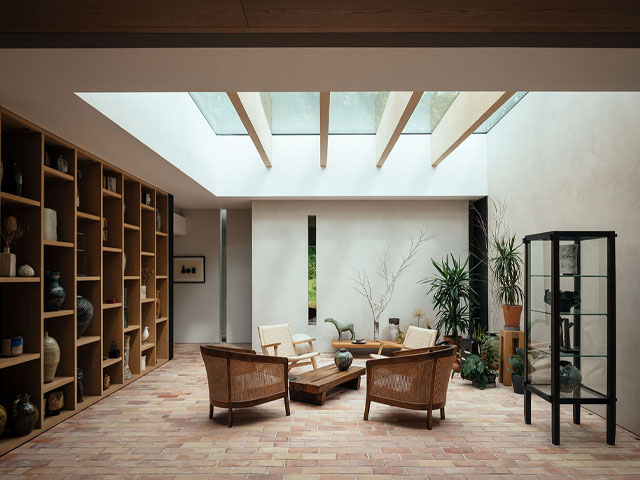
Image credit: Mclean Quinlan
Things to consider at the planning stage
The best way of getting the quietest house possible is to make all your considerations at the planning stage and think carefully about all aspects of the site. Firstly, is it near a busy road? If so, think about the type of traffic and your distance from the street. Are there many lorries? Or is it a residential street with speed bumps? The Sound Proofing Company suggests that the “average car produces 62dB (decibels) driving at 30 mph” and “70dB driving at 50 mph”. If you are close a main road think about putting the bedrooms and living room at the back of the house. A large hedge can also act as a sound barrier, add extra privacy and filter pollution between your home and the road. Special acoustic fencing can also help.
While open plan is the design choice of the times for many reasons, from creating more floor space to better flow and light optimisation, there are some downsides when it comes to noise pollution within a house. Think about the separation between a kitchen and living room and if you really want to hear the TV blaring while you’re cooking, or clanking pans while you’re trying to work? Broken-plan living can be a way around noise problems by zoning spaces with things like sound-absorbing Crittall doors.
Adding a utility room will add value to your home and dramatically reduce the noise in your kitchen, it could be a good place for the positioning of other major noise sources, like boilers and ventilation. For a particularly noisy plot, you could consider a courtyard layout. Or think about adding a snug as a retreat.
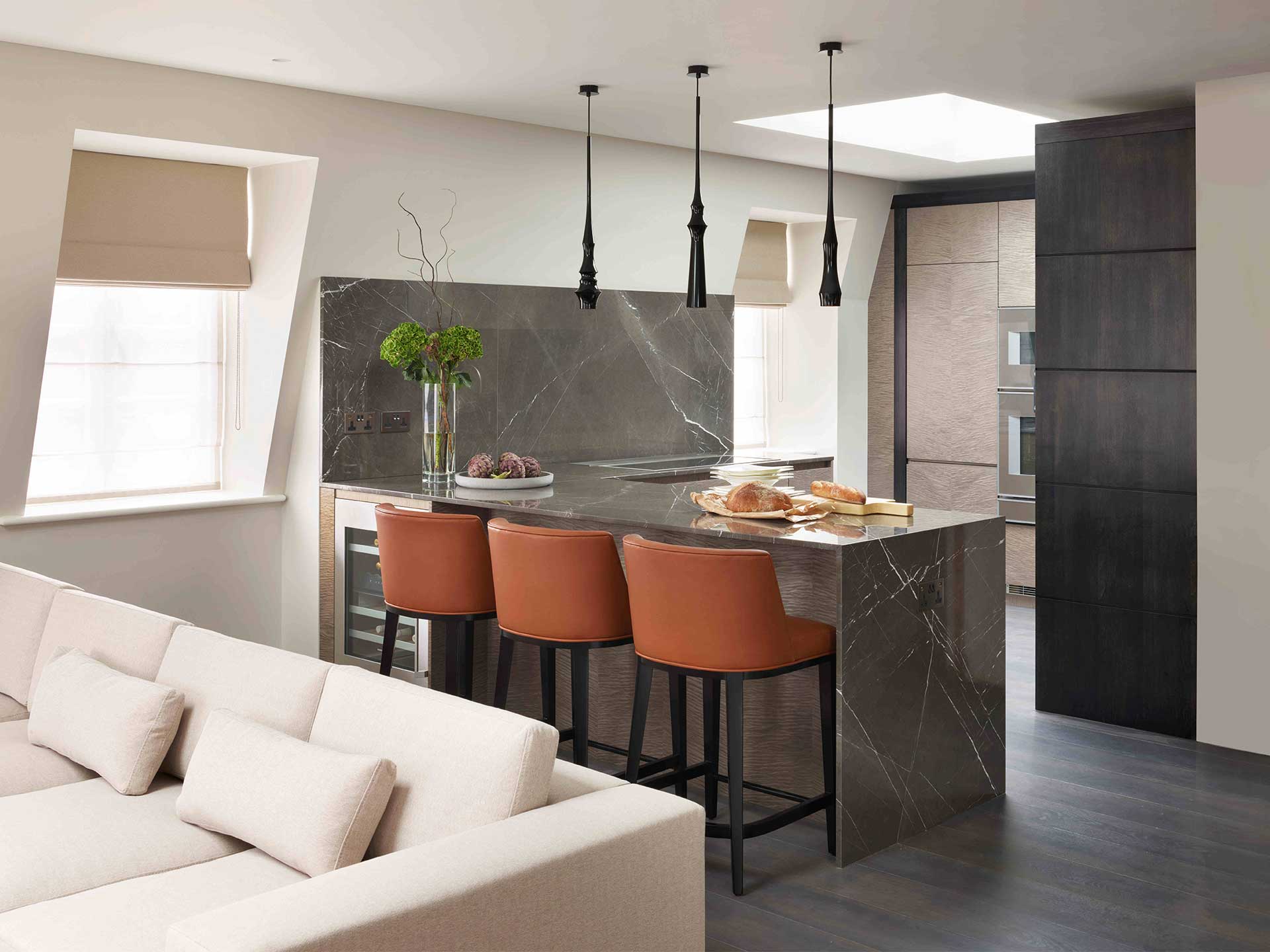
Image credit: Simon Taylor Furniture
How to retrofit for a quiet house
Retrofitting your home is about making changes to your existing home to improve energy efficiency, but a brilliant additional benefit of improving the building’s insulation is increased sound-proofing. As part of a retrofit, you’ll improve the insulation of the walls, floors and lofts. Older homes often have thicker walls and are naturally more soundproof. For modern homes, you’ll need to look at sound proofing by adding mass.
Retrofits usually include window and door replacements. Increases in window technology have led to great options in noise reduction windows, often through double or triple glazing where the soundwaves get increasingly reduced through each pane of glass. The wider the gap between the panes, the more the sound is reduced. Everest’s acoustic glass works by using different thicknesses of glass to intercept the sound waves. Everest’s noise reducing windows also have “symmetric thicknesses of glass to disrupt the soundwaves, argon gas between the panes, a depth of gap between the panes and sound dampening laminate between panes”.
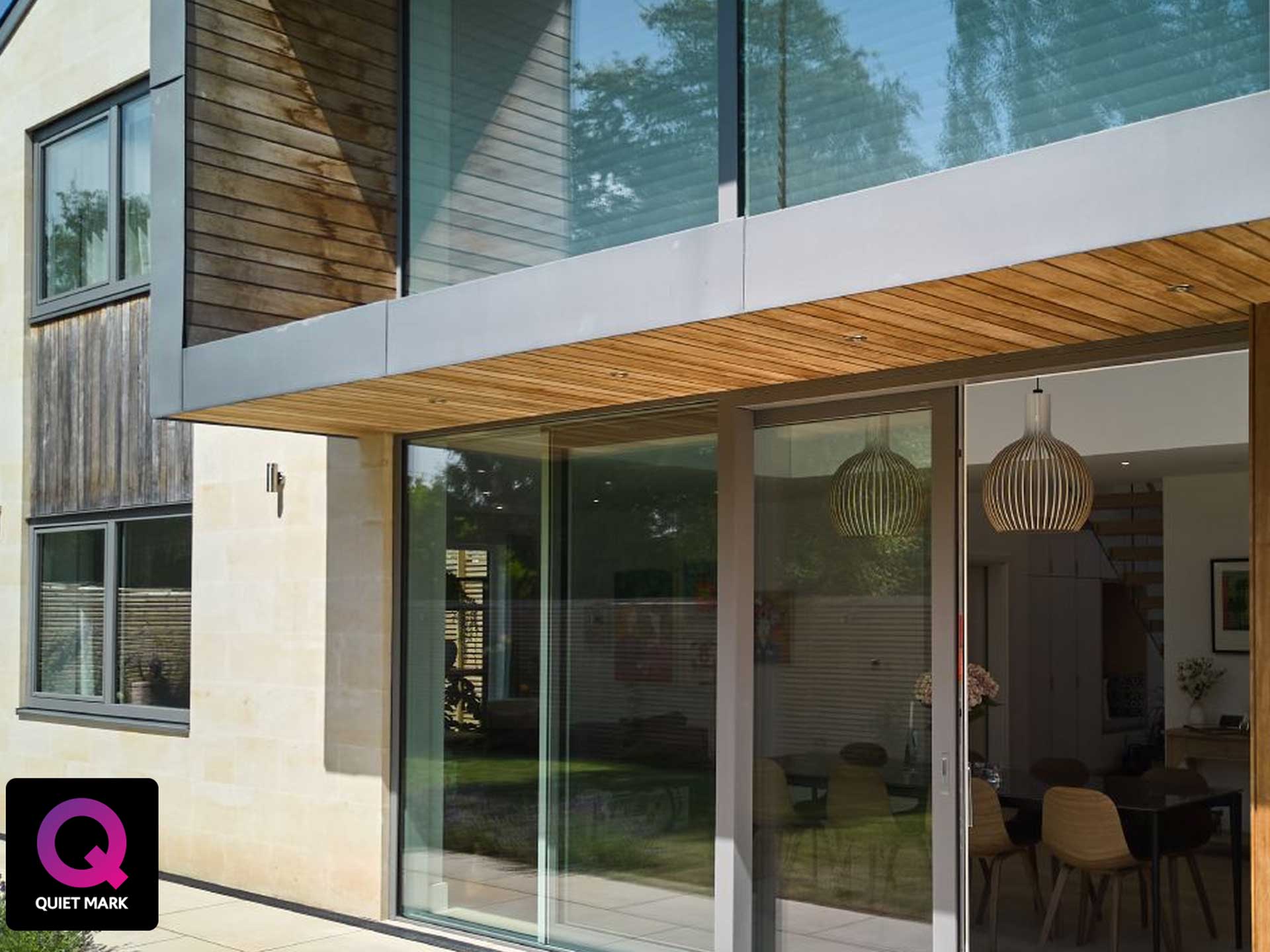
Image credit: Internorm
How to sound proof walls and floors
Ikoustic has a handy video explaining the three elements of high mass, decoupling and absorption in soundproofing your walls. This is especially helpful between party walls. Consider soundproof materials for impact noise, like acoustic mineral wool and rubber crumb underlay.
Once you’ve improved the insulation and sealed up all the gaps in your walls, you can start looking at minimising the internal acoustics. Sound-absorbing panelling, like The Wood Veneer Hub’s acoustic panels (pictured), has a felt backing and can be easily applied to walls to help dampen sound.
In addition to sound proofing your walls, you can add furnishings that will add a layer of sound absorption, like thick curtains and heavy rugs. Cork is a sustainable material that can be used decoratively and for soundproofing, providing it’s at least three millimetres thick.
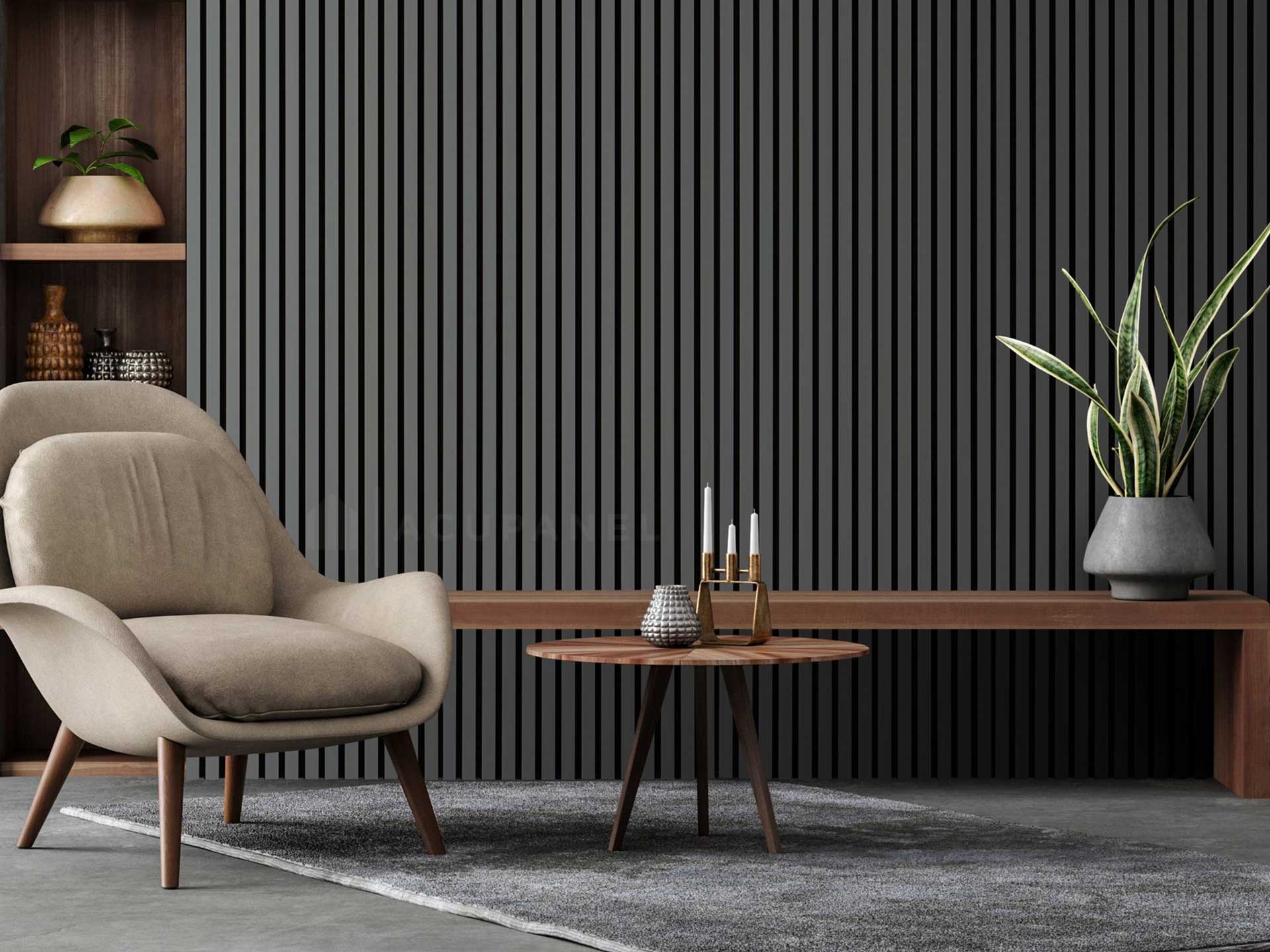
Image credit: The Wood Veneer Hub
Consider db ratings and quiet appliances
Quiet Mark was established as a global certification programme to provide independent information about the noise levels of consumer appliances on the market after recognising the detrimental effect loud noise has on mental and physical health. Launched in association with the UK Noise Abatement Society, which is a charitable foundation, Quiet Mark scientifically tests for high noise reduction performance, with each product category being reviewed annually. Across the board, it has rated everything you might use every day, from washing machines and dishwashers to hairdryers and kettles. You might not even realise how much unnecessary noise a device adds to your home. Look for the purple logo (as pictured) before you buy any new white goods.
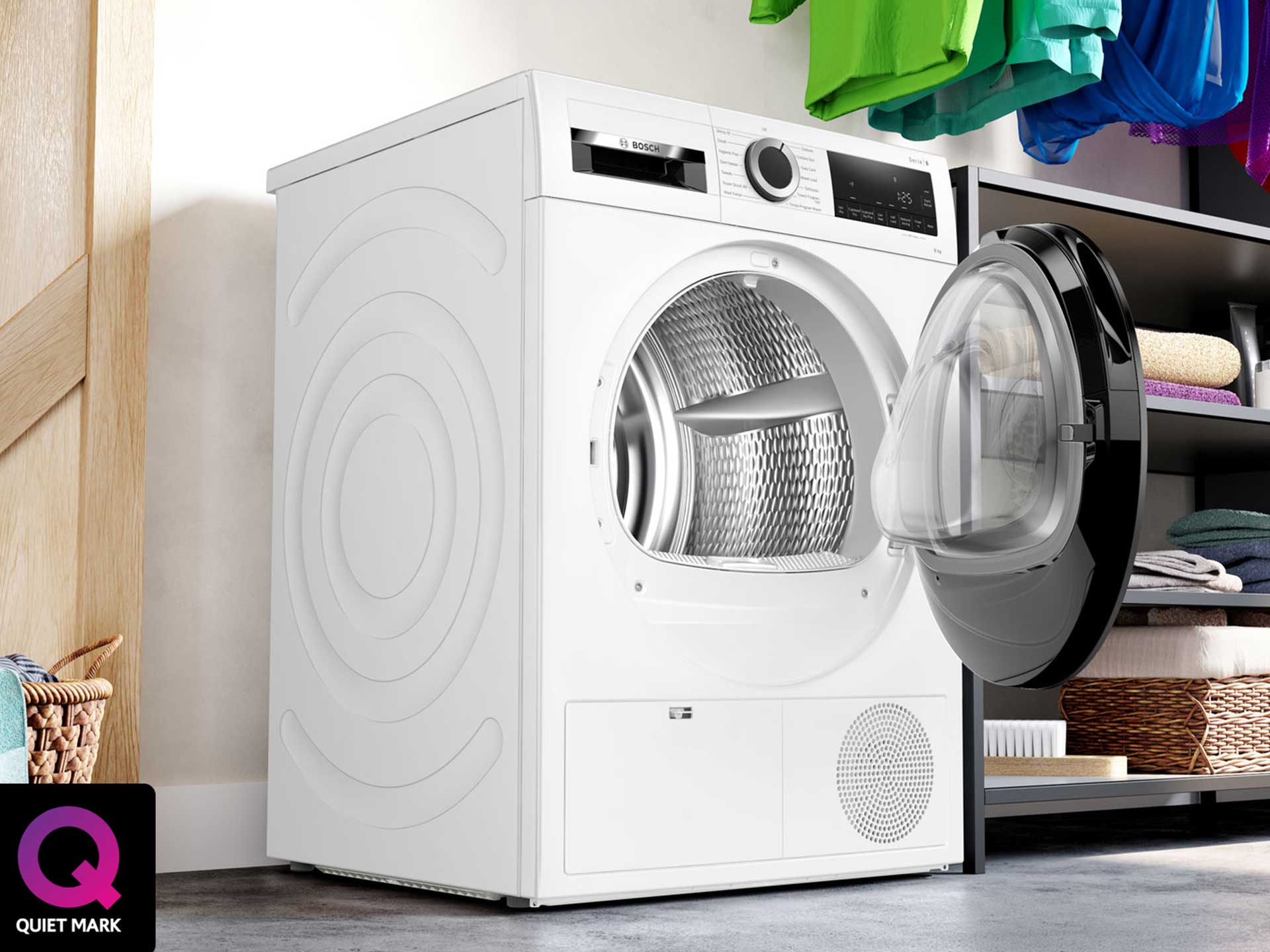
Image credit: Bosch
Don’t forget your plumbing
If you do go for quiet products, then don’t forget to consider your plumbing and pipework. After all, what’s the point of having a quiet washing machine, if it’s drowned out by clunking pipes? Things to look into to eliminate noisy pipes include, loose pipes which vibrate and the noise caused by excessively high water pressure inside the pipe, which can be addressed by installing a pressure-reducing valve (PRV) near the main water supply.
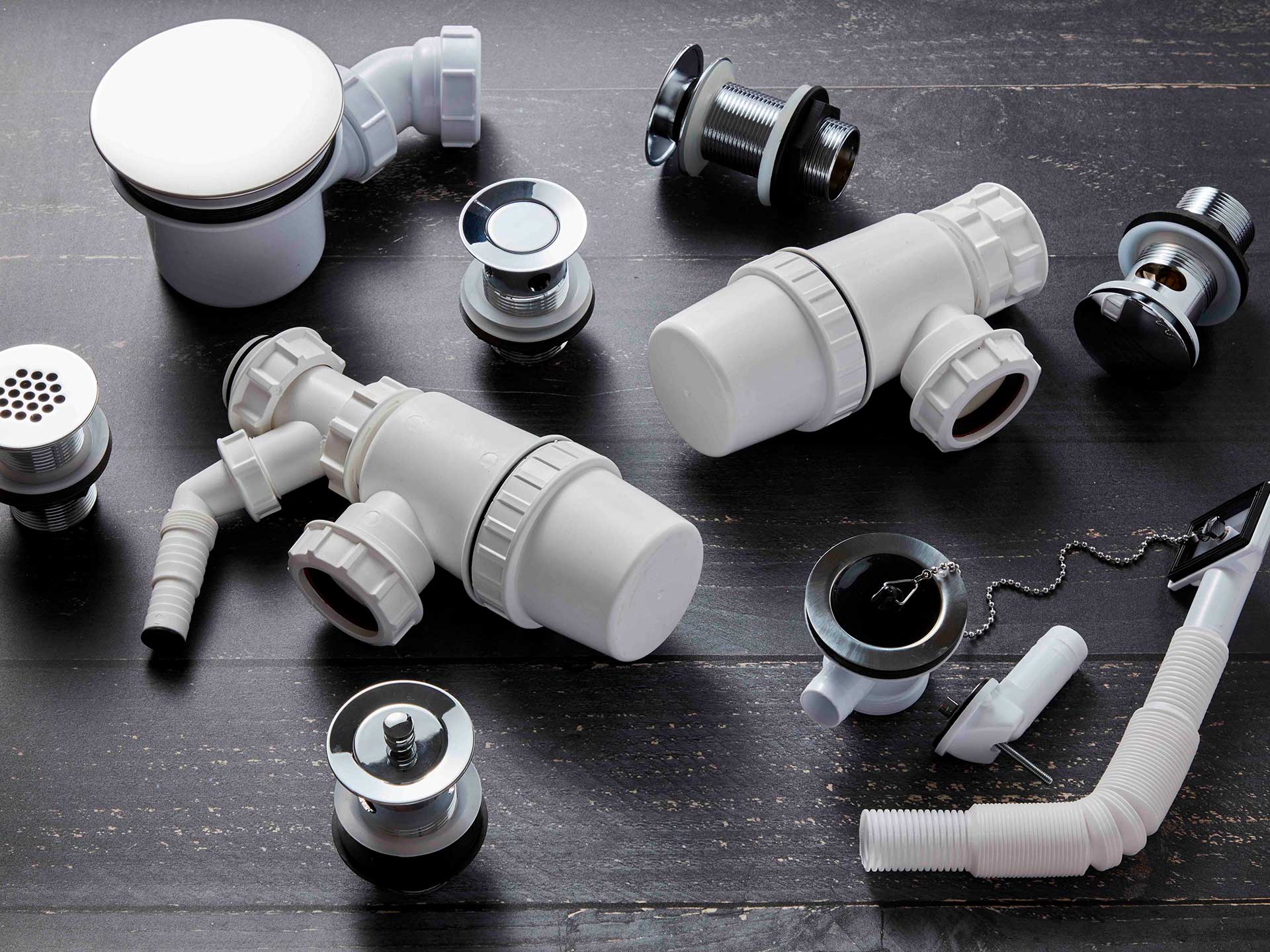
Image credit: Flomasta
Think about flanking transmission
iKoustic describes flanking transmission or flanking noise as “when a sound travels around, over or under a partition. An example would be pipes travelling between two rooms under the floor. The sound can move between the room via the pipes”.
Electrical sockets and light fittings are also a place it can occur, so think about where you install your sockets and fittings if you’re at the planning stage or if you’re improving an existing building, then look into adding acoustic sealant.
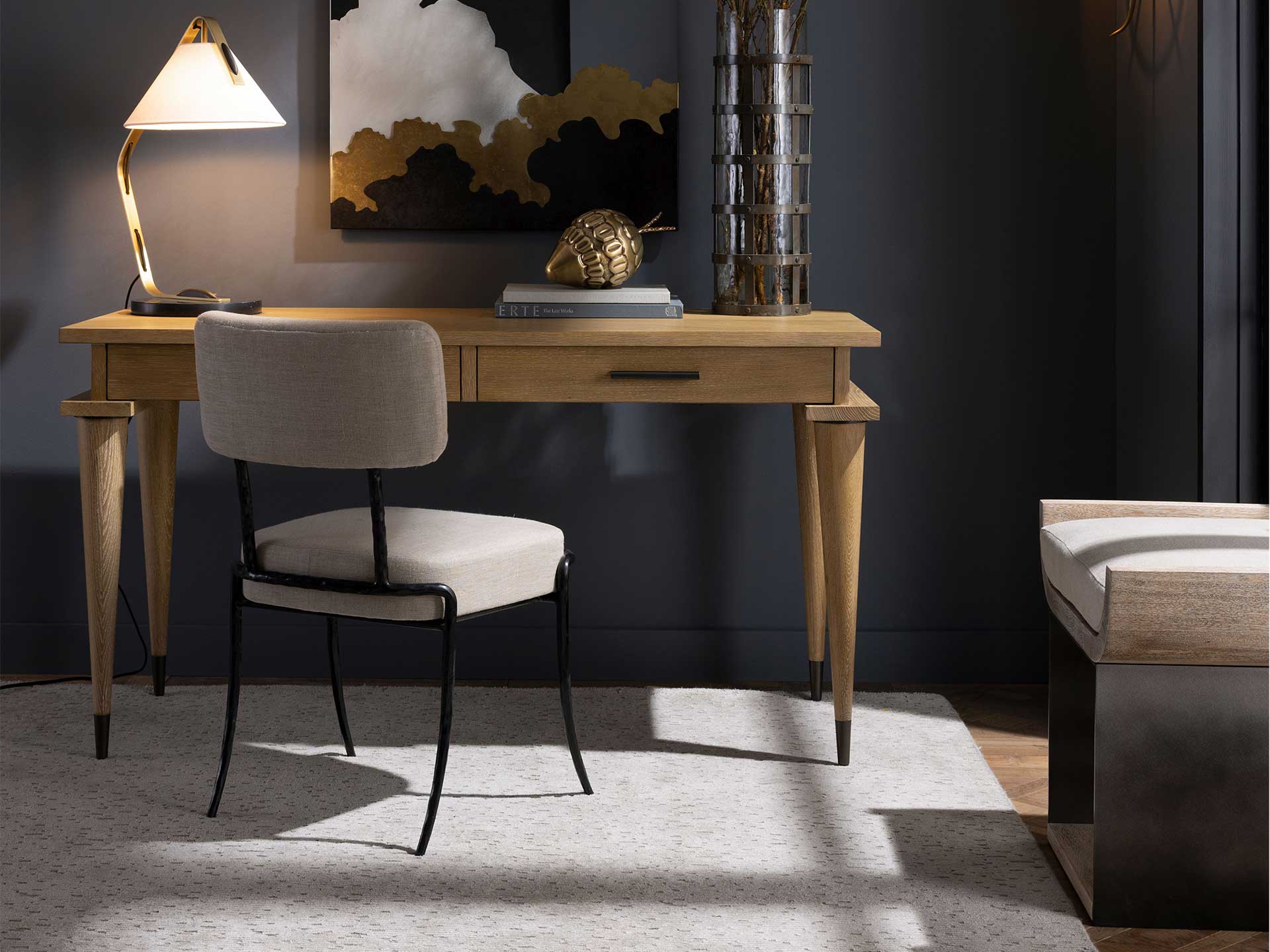
Image credit: Arteriors

